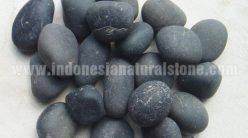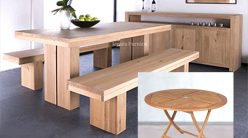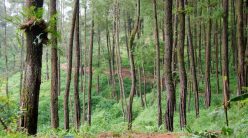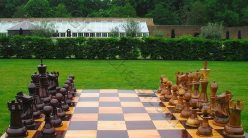Friday March 24, 2014
Peace Country Sun, Canada – Mar 24, 2014
Peace Country Sun — While waiting for the spring yard work to start, I try to get out and clean my old bird boxes and even put up a few new ones. Boxes attract birds that normally nest in tree holes, often those left behind by woodpeckers. We have over a dozen cavity nesting species that will use nest boxes, though only a few are comfortable in urban backyards or on acreages.
Nest boxes are widely used across rural areas of the Prairies to attract bluebirds but in the Peace Country those striking birds are a rare occurrence. One County of Grande Prairie resident has had good success with special hollow log structures placed in old cut-blocks south of the Wapiti River. I have also heard occasional reports of bluebirds using nest boxes in the forest fringes southwest of Beaverlodge.
Our most common birdhouse user is the tree swallow. These lively birds, with a white breast and iridescent blue back, nest in open areas and will readily use boxes set up on fence lines or backyard posts. You can recognize a tree swallow nest by all the feathers lining the cup. Chickadees and house wrens also use nest boxes but they prefer houses set up in the bushes.
All nest boxes should have an overhanging roof, ventilation and drainage holes, and a removable panel for cleaning. Use an entrance hole 38 millimetres in diameter for tree swallows and 40 mm for bluebirds. Larger entrance holes will allow starlings to take over the box. Non-native house sparrows will also move into nest boxes but they can usually be discouraged by removing their nesting material once or twice. House wrens and chickadees are small enough to enter through a 29mm hole and that will exclude house sparrows.
Nest boxes should be built from untreated wood and left unpainted. Don’t both with perches as they just provide access for predators. The only maintenance required is cleaning out the boxes in the fall or early spring and making sure that removable panels are securely in place. Boxes should be up by mid-April so that they are ready for occupancy at the beginning of May.
Purple martins will also readily use nest box condos but the only colonies I am aware of in the Peace region are at Winagami Lake. If you know of any other purple martin nesting sites, please pass the information on to the Peace Parkland Naturalists club at (780) 538-5603.
Large nest boxes with 6 – 10 cm holes can be placed near wetlands to attract goldeneye and bufflehead ducks or in more wooded areas for saw-whet owls and kestrels. Robins and eastern phoebes don’t use cavities but a simple ledge mounted under the eaves of a building may keep them from building on top of the light fixture above your door.
Providing nest boxes is a great way to increase nesting habitat for cavity nesting birds especially if you live in an area with few standing dead trees. For more information on building boxes, check out “NatureScape Alberta” or “Nestboxes for Prairie Birds” by Myrna Pearman.
You can also share observations on nesting birds by submitting information to the Federation of Alberta Naturalists. They support a number of interesting programs for volunteer bird watchers so visit their website at www.fanweb.ca or contact their Edmonton office at (780) 427-8124.





